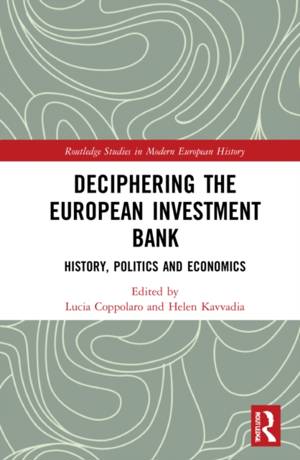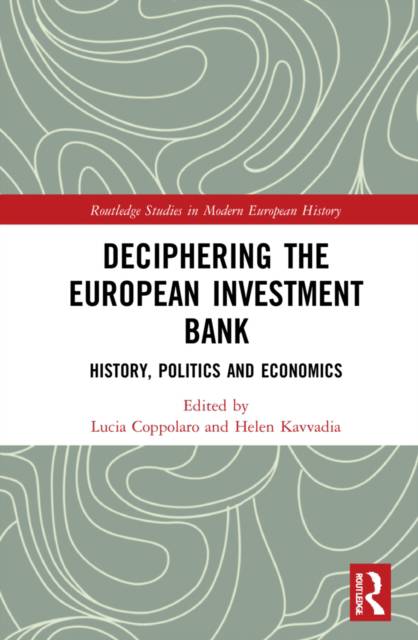
- Retrait gratuit dans votre magasin Club
- 7.000.000 titres dans notre catalogue
- Payer en toute sécurité
- Toujours un magasin près de chez vous
- Retrait gratuit dans votre magasin Club
- 7.000.0000 titres dans notre catalogue
- Payer en toute sécurité
- Toujours un magasin près de chez vous
Deciphering the European Investment Bank
History, Politics, and Economics
Description
Deciphering the European Investment Bank: History, Politics and Economics examines the European Investment Bank (EIB), the European Union's financial institution and the largest lender and borrower among the International Financial Institutions.
Since its establishment in 1958, the EIB has developed without becoming front-page news and has remained highly invisible. By putting together 14 chapters that analyze topical and meaningful moments and aspects of the bank, this edited book offers the first comprehensive analysis of its origins and its evolution in terms of its mandate, governance, structures, policy activity, and performance. Written by acknowledged experts from various disciplines, the chapters weave together history, economics, law, and political science to provide a multidisciplinary examination and capture the complexity of the EIB. The book is a timely initiative for understanding the EIB, whose role has been ever increasing for contributing to the recent global economic challenges, including the economic and financial crisis, climate change, and COVID-19 pandemic.
The chapters are written at a level which will be comprehensible to undergraduates in economics, history, and international political economy. It will also be a valuable source of reference for academics, policy makers, bankers, and other practitioners interested in regional development banks and their role in the global economy.
Spécifications
Parties prenantes
- Editeur:
Contenu
- Nombre de pages :
- 304
- Langue:
- Anglais
- Collection :
Caractéristiques
- EAN:
- 9781032138763
- Date de parution :
- 06-06-22
- Format:
- Livre relié
- Format numérique:
- Genaaid
- Dimensions :
- 156 mm x 234 mm
- Poids :
- 625 g

Les avis
Nous publions uniquement les avis qui respectent les conditions requises. Consultez nos conditions pour les avis.





